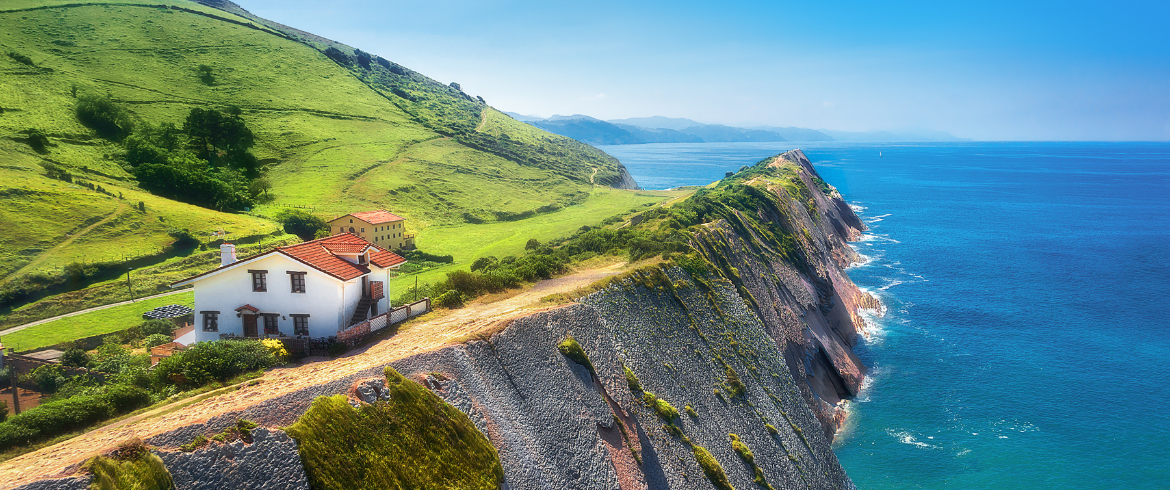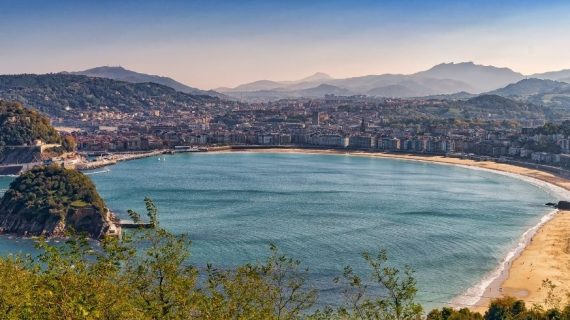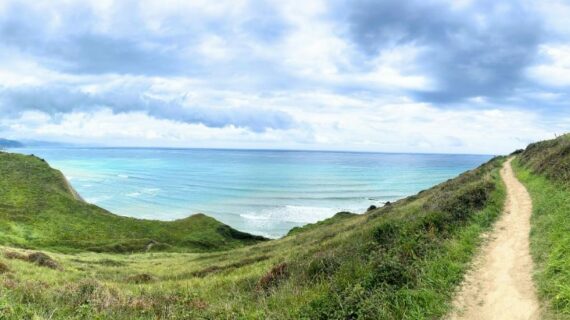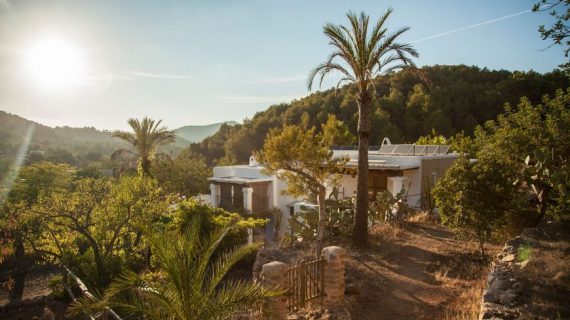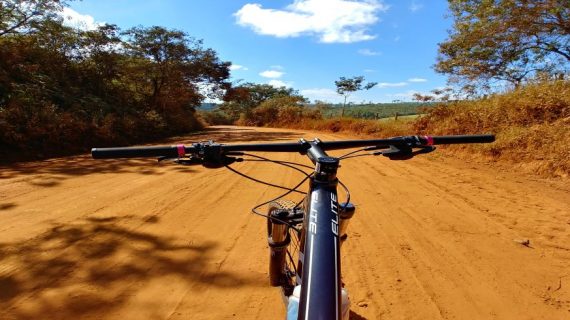Exploring the Basque Country (“Pais Vasco” in Spanish) is a unique experience that combines natural beauty and rich cultural traditions.
If you want to spend a sustainable vacation in the Basque Country, here are some tips and destinations not to miss to experience this fascinating destination fully.
Sustainable Travel in the Basque Country
For a sustainable travel experience, you can easily use the well-organized, punctual, and widespread public transportation, or opt for a slow travel experience by exploring the Basque coast on foot. In Bilbao and San Sebastian, you’ll find numerous bike-sharing stations and extensive networks of bike lanes.
With some research, you’ll find sustainable accommodations committed to reducing waste, eliminating plastic and wastefulness, and beautiful eco-friendly rural homes nestled in nature.
You can immerse yourself in Euskara (or Basque), the language spoken in the region besides Spanish, and learn a few new words to connect more with the locals. Buying fresh and local products will be easy and convenient at local markets, such as the Erribera market in Bilbao or the San Martin Market in San Sebastian.
Discovering San Sebastián
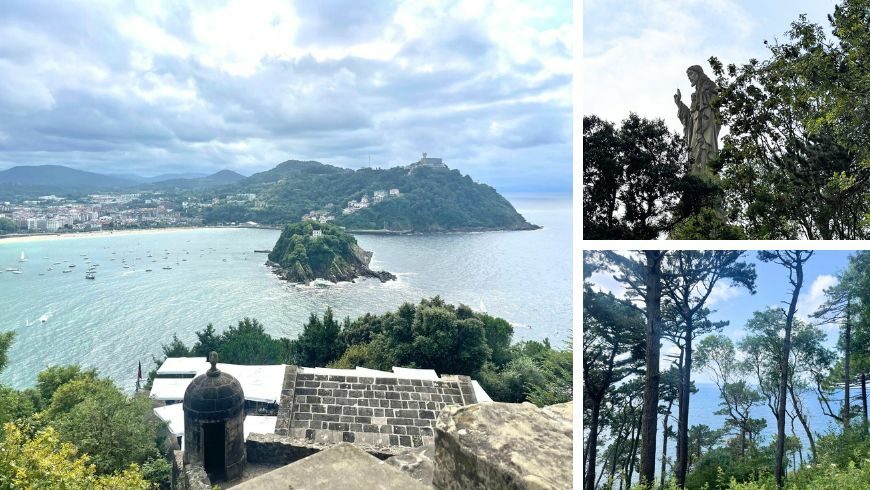
San Sebastián is a charming and lively city surrounded by hills, with a strong Basque identity and a passion for gastronomy. The Parte Vieja, the historical heart of the city, is a maze of ancient streets where you can taste the best pintxos in the region. It takes only a few minutes to walk through it, but months to taste all the delicacies it hides!
Climb to the top of Monte Urgull, a lush hill with the Castillo de La Mota walls and a large statue of Christ, for a spectacular view of the city and the coast.
Art and Gardens in Bilbao
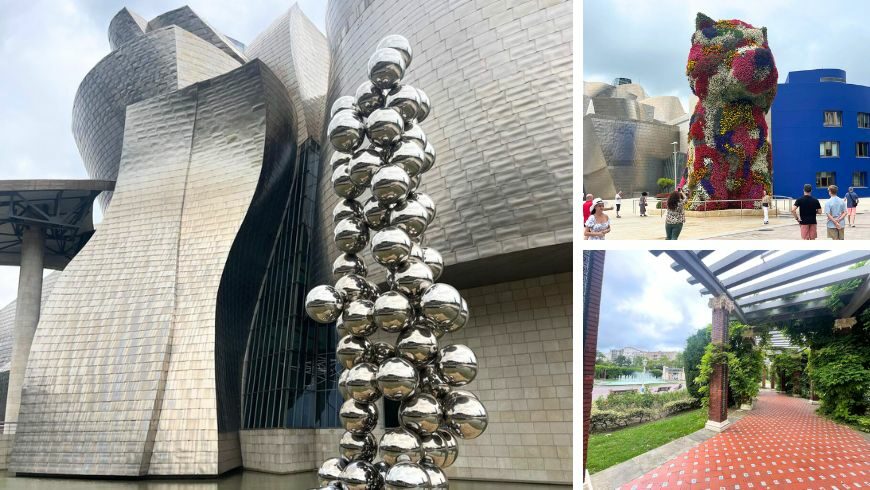
Bilbao, known for its blend of art and nature, is a city worth discovering through its open spaces, numerous green pathways, parks, and gardens. The city is an open-air exhibition of contemporary architecture and iconic artworks, especially along the river, where the Guggenheim Museum, the Albia Gardens, and the Congress and Music Hall are located.
Designed by the renowned architect Frank Gehry, the iconic Guggenheim Museum Bilbao houses works by some of the most important contemporary artists. In front of the museum stands the 12-meter-tall statue of “Puppy,” Jeff Koons’ terrier made with thousands of flowers. Known as “El Poop,” the residents of Bilbao are so attached to it that they claim the dog came before the museum, and they had to create a home for it 🙂
Walking along the river, notice how the shimmering titanium walls of the museum change appearance depending on the light. Walk to the Doña Casilda Park to admire the flower gardens, water features, tree-lined avenues, and pergolas of one of Bilbao’s largest parks.
Walking Along the Basque Coast
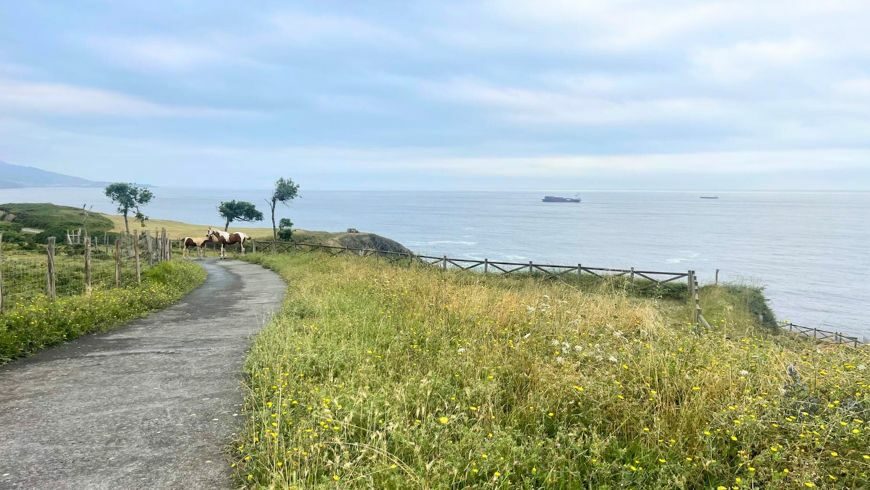
The Basque coast, with its jagged profile and rolling hills, offers splendid green itineraries for lovers of hiking or biking. The coastline is dotted with picturesque fishing villages, such as Getaria and Bermeo. The rocky islet of San Juan de Gaztelugatxe, connected to Bermeo by 241 steps, and topped with the Hermitage built by the Templar knights in the 10th century, is one of the most photographed places in the Basque Country. To regulate access, limit overtourism, and protect this enchanting place, you can only visit by booking online for free.
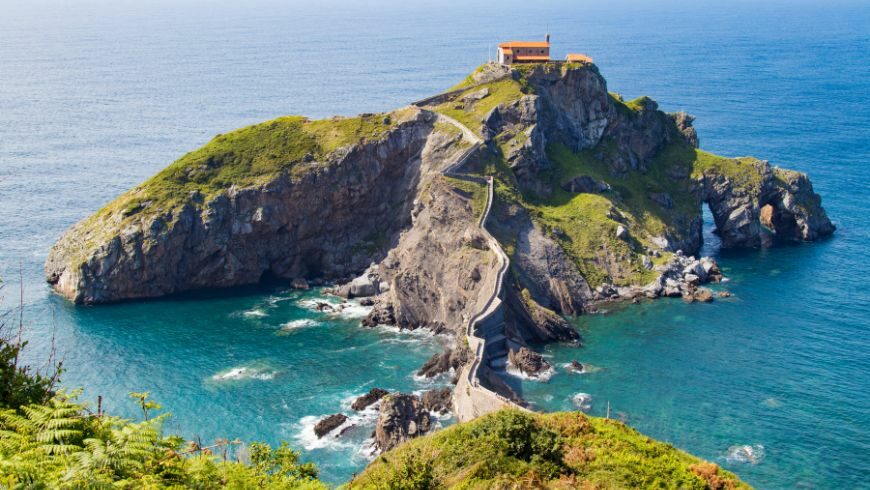
Along the entire Basque coast, you’ll find tiny rocky coves, green fields abruptly ending at the sea, and long sandy beaches famous worldwide for surfing. From the port town of Zumaia, walk along the stunning cliffs of the Euskal Kostaldeko Geoparkea, listed by UNESCO as one of the world’s most interesting Geoparks, whose rocks and flysch (sedimentary deposits) formations tell a 60-million-year-old story.
Surfing and Relaxing on the Beach
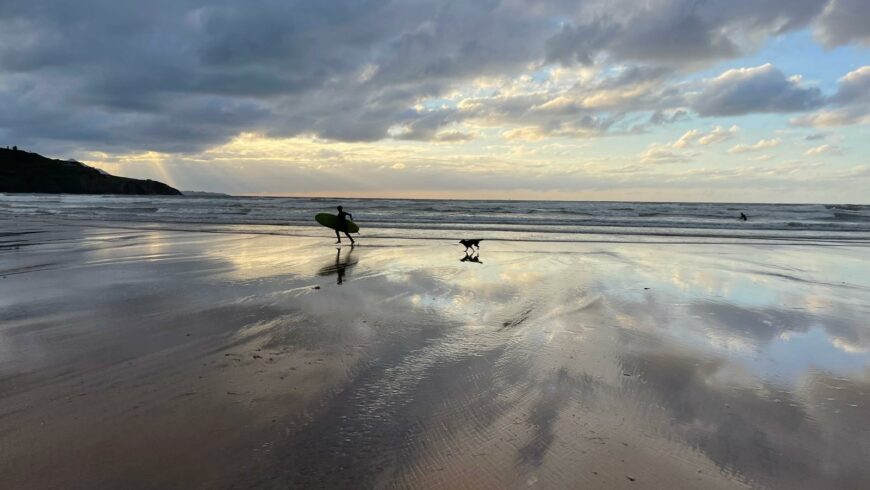
Euskadi boasts a coastline of over 200 kilometers, dotted with numerous sandy beaches ideal for surfing. From popular spots like Sopela, Zarautz, and Zurriola, to quieter and wilder places like Menakoz in Barrika, the Basque coast offers waves for surfers of all levels. Locations such as Punta Galea, Orrua, and Playa Gris are famous for their big waves, while international competitions like the Punta Galea Challenge in Getxo attract surfers from all over the world.
Choose the beach with the best waves by checking the weather conditions and monitoring the tides, which vary significantly during the day.
If you’re wondering when surfing began in the Basque Country, it seems it all started in 1912. Ignacio Arana, originally from Vitoria, returned to his Euskadi after several years as a Spanish consul in Hawaii, bringing with him two surfboards and a Hawaiian book. Although the boards were destroyed during the Civil War, the book “The Surfriders of Hawaii” was preserved (it is now on display at the maritime museum in Bilbao) and marked the beginning of the bond between surfing and the Basque Country.
Understanding Basque Culture and History in Guernica
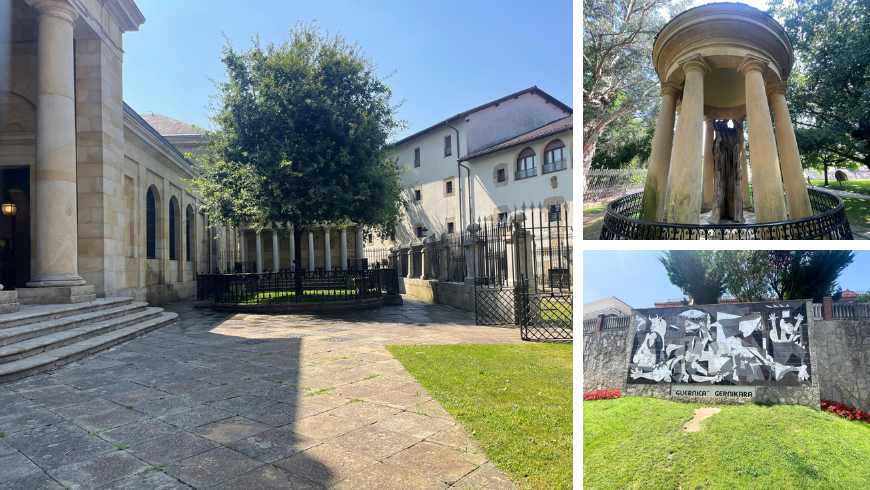
Guernica (Gernika) is the heart of Basque culture and a symbol of Basque democracy. Unfortunately, the city is also synonymous with the atrocities of the Spanish Civil War. On April 26, 1937, it was razed to the ground by a Nazi air raid, allied with General Franco. After its reconstruction, its streets are now incredibly lively. The famous Pablo Picasso’s artwork has made Guernica a universal symbol of the fight against all wars.
Visit the Casa de Juntas de Gernika, one of the oldest parliaments in Europe. Here, you can see the Tree of Guernica. This oak tree, under which the Basque parliament has gathered from the Middle Ages until 1876, symbolizes the continuity of Basque traditions.
The Assembly House is free to visit by booking online at this link, and it is still the symbolic meeting place for all Euskadi. In fact, the place hosts significant events such as the inauguration of the Lehendakari, the president of the Basque government.
Staying in an Eco-Friendly Rural House Immersed in Nature
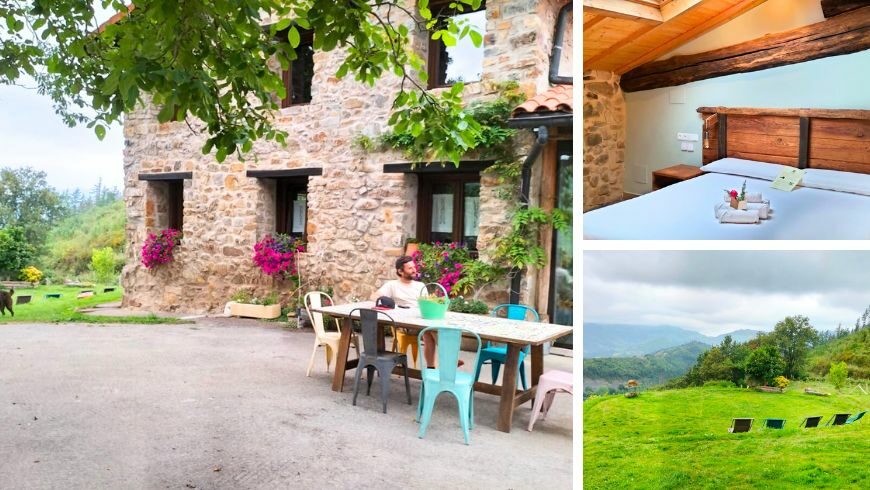
For a nature-immersed stay, the rural houses of the Basque Country offer an authentic experience in touch with nature. Abatetxe is a beautiful 18th-century stone and wood farmhouse, renovated with a focus on bioarchitecture and energy saving.
This off-grid property uses spring water, and photovoltaic solar energy with storage batteries. Abatetxe offers a digital detox experience and lets you rediscover a lifestyle connected to nature. Furthermore, this eco-friendly accommodation provides vegetarian and vegan culinary options. You’ll be impressed by the breathtaking views of the green mountains.
The Basque Country is an ideal destination for those seeking a green vacation. What better opportunity to explore vibrant cities, breathtaking natural trails, perfect surfing beaches, and eco-friendly accommodations that respect the environment?
